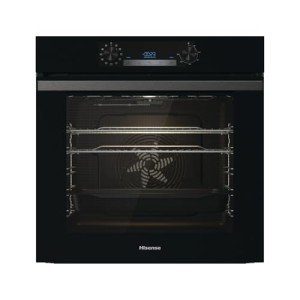See What In Built Oven Tricks The Celebs Are Using
페이지 정보
작성자 Tobias Devries 댓글 0건 조회 3회 작성일 25-05-19 18:01본문

Understanding In-Built Ovens: A Comprehensive Guide
In the world of modern-day kitchen design, inbuilt ovens have actually increased to prominence, blending performance with aesthetic appeals. Their smooth integration into cabinetry supplies a streamlined appearance, making them increasingly preferred by house owners and culinary lovers alike. This short article explores the different functions, benefits, installation considerations, and popular types of in-built ovens, alongside responding to some regularly asked concerns.
What is an In-Built Oven?
A built-in oven, typically described as a built-in oven, is a kitchen appliance developed to be installed within cabinetry, instead of as a freestanding unit. This setup allows for a more advanced and organized kitchen design while optimizing readily available area. Built-in ovens been available in numerous sizes, styles, and performances to suit different cooking needs and preferences.
Advantages of In-Built Ovens
The advantages of installing an in-built oven extend beyond simple looks. Here are some crucial advantages:
Space Efficiency: Built-in ovens are created to fit comfortably within kitchen cabinetry, making them perfect for compact spaces. This design leaves counter space free for meal preparations.
Adjustable Design: Homeowners can select from a variety of designs and surfaces to match their kitchen decoration, enhancing the general look of the space.
Improved Functionality: Many built-in ovens are equipped with advanced cooking innovation, offering features such as convection cooking, steam cooking, and self-cleaning functions, which improve cooking effectiveness and adaptability.
Ergonomic Height: Installing an oven at eye level decreases the requirement to flex down, making it easier to check food and handle dishes without straining the back.
Improved Safety: Built-in ovens can integrate security features such as cool-to-the-touch surfaces and child locks, which can be particularly crucial in homes with children.
Kinds Of In-Built Ovens
In-built ovens come in numerous types to cater to different culinary needs. Below is a contrast of common types:
| Type | Description | Pros | Cons |
|---|---|---|---|
| Single Oven | A conventional oven that cooks from one space | Space-efficient, much easier to use | Minimal cooking capacity |
| Double Oven | Two separate oven compartments for varied cooking | More cooking space, versatility | Higher expense, uses up more area |
| Compact Oven | Smaller sized ovens ideal for small kitchens or as a second integrated electric oven | Space-saving, versatile | Minimal capability |
| Steam Oven | Uses steam for cooking, maintaining wetness | Healthier cooking choices | Normally more pricey |
| Wall Oven | built in oven to buy into the wall, available in single or in Built Oven double setups | Saves floor space | Installation intricacy |
Features to Consider When Choosing an In-Built Oven
When picking an in-built oven, a number of functions must be considered:
Size: Measure your kitchen space and cabinetry to ensure the oven fits effectively. Typical widths for built-in ovens range from 24 inches to 30 inches.
Cooking Methods: Determine the cooking approaches you prefer-- traditional, convection, or steam. This decision will significantly influence your cooking design and the oven's abilities.
Energy Efficiency: Look for ovens with high energy effectiveness rankings. These models save cash on energy expenses and are much better for the environment.
Control Options: Evaluate the control user interfaces. Some designs provide smart functions enabling for remote cooking control and tracking through smart device apps.
Safety Features: Ensure the oven comes with essential security features, particularly if children will be present. Lock-out mechanisms and cool outsides are important enhancements.
Setup Considerations
Appropriate installation is crucial for the ideal efficiency of an in-built oven. Here are some installation considerations:
- Ventilation: Ensure appropriate ventilation to eliminate smoke and odors. Speak with local building regulations relating to kitchen built in oven ventilation requirements.
- Electrical Requirements: Built-in ovens generally need a dedicated electrical circuit. Have a certified electrical expert evaluate cost and safety.
- Expert Installation: While DIY may be appealing, hiring a professional installer makes sure the oven is fitted safely and securely.
FAQs About In-Built Ovens
What is the distinction in between a built-in oven and a freestanding oven?
Built-in ovens are designed to be installed within cabinetry, whereas freestanding ovens can stand alone and generally integrate electric integrated oven and cooktop in built oven (clicking here) a single home appliance.
Can I set up a built-in oven myself?
While DIY installation is possible, it is typically advised to work with an expert to make sure safety and adherence to local building codes.
Are inbuilt ovens worth the financial investment?
Yes, built-in ovens usually use enhanced aesthetics, advanced performance, and effective usage of area compared to conventional freestanding models.
What maintenance do inbuilt ovens require?
Routine cleansing, checking seals, and guaranteeing proper ventilation are important maintenance tasks. It's a good idea to follow the maker's directions for particular care guidelines.

Just how much does an inbuilt oven normally cost?
Costs can differ considerably based upon functions, brand, and type, however built-in ovens generally range from ₤ 700 to ₤ 3,000 or more.
Inbuilt ovens provide a blend of beauty and usefulness, making them an exceptional choice for both brand-new buildings and kitchen remodels. Comprehending the types, features, and installation factors to consider can empower property owners to make educated choices about which inbuilt oven best matches their requirements. As cooking patterns evolve and kitchen design ends up being more sophisticated, in-built integrated ovens and hobs will continue to play a considerable role in modern kitchen areas, merging cooking with style and functionality.
댓글목록
등록된 댓글이 없습니다.